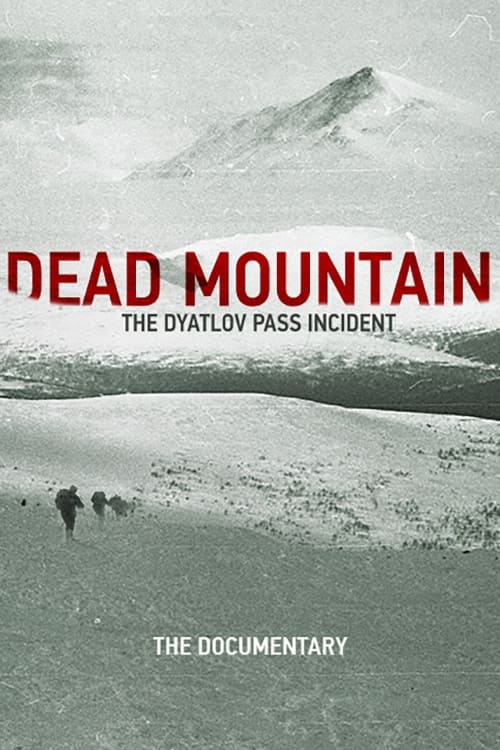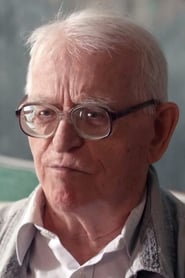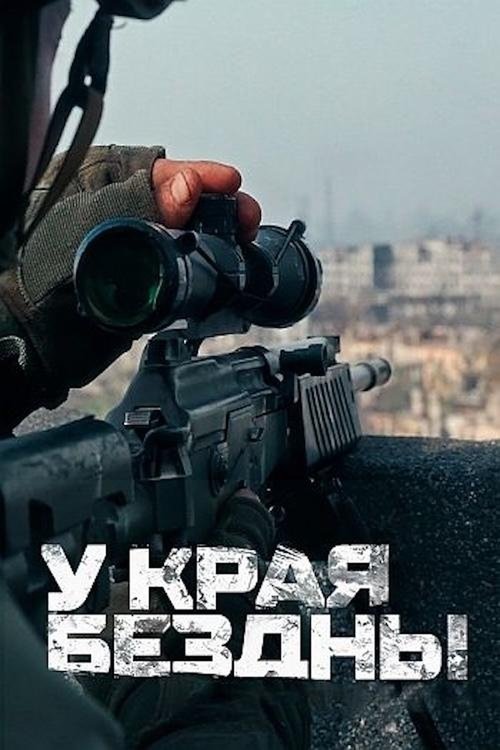
Ask Your Own Question
What is the plot?
The documentary series "The Dyatlov Pass Incident" begins by introducing the historical context of the 1959 incident in the Ural Mountains of Soviet Russia. It sets the stage with archival footage and photographs of the nine experienced hikers, led by Igor Dyatlov, who embarked on a skiing expedition. The series highlights their backgrounds, showcasing their enthusiasm for adventure and the camaraderie among the group. Each member is introduced with personal anecdotes, emphasizing their motivations for the trip and their close-knit relationships.
As the hikers prepare for their journey, the series details their route, which was planned to take them through the challenging terrain of the Ural Mountains. The group sets off in late January, equipped with skis and camping gear. The documentary captures the excitement and anticipation of the hikers as they begin their trek, with scenes of them navigating through snow-covered landscapes, laughing, and sharing stories around campfires.
The narrative shifts to the days leading up to the incident, illustrating the harsh conditions they faced. The series depicts the extreme cold, blizzards, and the physical toll the environment takes on the hikers. Tension builds as the group encounters difficulties, including a lack of food and the struggle to maintain morale. The emotional state of the hikers is explored, revealing their determination to push through despite the challenges.
As the expedition progresses, the series highlights a pivotal moment when the group decides to change their route due to worsening weather conditions. This decision leads them to a remote area known as the Dyatlov Pass. The documentary emphasizes the significance of this location, foreshadowing the tragic events that will unfold. The hikers set up camp on the slopes of the pass, and the atmosphere is a mix of exhaustion and resolve.
The night of February 1st is depicted with a sense of foreboding. The series uses dramatic reenactments and expert commentary to illustrate the events that transpire. The hikers are shown in their tent, discussing their plans for the next day. Suddenly, a mysterious noise disrupts the night, causing panic among the group. The documentary captures their fear and confusion as they scramble to escape the tent.
In a frantic rush, the hikers cut their way out of the tent, leaving behind their belongings and warm clothing. The series portrays their desperate attempts to flee into the freezing night, highlighting their vulnerability and the chaos of the moment. As they scatter into the darkness, the emotional turmoil of each member is palpable, with fear and uncertainty driving their actions.
The documentary then shifts to the aftermath of the hikers' disappearance. Days pass without any sign of the group, prompting search efforts to begin. The series details the mobilization of rescue teams, showcasing the urgency and concern of the authorities and families. The searchers face treacherous conditions as they comb the mountains, and the emotional weight of the situation is felt through interviews with family members expressing their hope and fear.
Eventually, the searchers discover the abandoned tent, which is found in a disarray, with the entrance facing outward and belongings left inside. The series meticulously examines the evidence found at the scene, including the hikers' footprints leading away from the tent. The documentary delves into the theories surrounding their disappearance, presenting various expert opinions and historical context.
As the search continues, the bodies of the hikers are eventually found scattered across the mountainside. The series details the condition of the bodies, some exhibiting strange injuries and others found without adequate clothing. The emotional impact of these discoveries is profound, as the families and searchers grapple with the horror of what has transpired. The documentary captures the shock and disbelief of the investigators as they analyze the circumstances surrounding the deaths.
The series explores the various theories that arise regarding the cause of the incident, including avalanches, animal attacks, and even military involvement. Each theory is presented with supporting evidence and expert analysis, creating a sense of intrigue and mystery. The emotional responses of the families and the public are highlighted, showcasing their desire for answers and closure.
In the final episodes, the documentary revisits the unresolved nature of the Dyatlov Pass Incident. It reflects on the impact of the tragedy on the families and the ongoing fascination with the case. The series concludes with a sense of lingering mystery, leaving viewers with the haunting question of what truly happened to the hikers on that fateful night. The emotional weight of the story resonates, as the documentary captures the enduring legacy of the Dyatlov Pass Incident and its place in history.
What is the ending?
In the ending of "The Dyatlov Pass Incident," the documentary culminates in a somber reflection on the unresolved mysteries surrounding the tragic events of 1959. The series presents the final discoveries made by investigators and the emotional toll on the families of the victims. The fate of the hikers remains a haunting enigma, leaving viewers with lingering questions about what truly happened on that fateful night.
As the final episode unfolds, the scene opens with a stark winter landscape, the camera panning over the snow-covered mountains of the Ural region. The chilling silence is palpable, evoking the isolation experienced by the Dyatlov group. The narrator's voice carries a weight of sorrow as it recounts the last moments of the hikers, emphasizing their youthful dreams and aspirations, now overshadowed by tragedy.
The documentary revisits the timeline of events leading up to the fateful night. It details the group's decision to embark on the expedition, showcasing their excitement and camaraderie. Each member is introduced with personal anecdotes, highlighting their motivations for the journey. Igor Dyatlov, the group's leader, is portrayed as a determined and passionate adventurer, eager to conquer the challenging terrain. His friends, including Zinaida, Lyudmila, and Yuri, are depicted as vibrant individuals, each with their own hopes and dreams.
As the narrative progresses, the tension builds with the exploration of the mysterious circumstances surrounding their deaths. The documentary presents interviews with experts and historians, who analyze the evidence found at the scene. The chilling discovery of the hikers' abandoned tent, slashed open from the inside, raises questions about their desperate escape from an unseen threat. The camera captures the eerie remnants of their camp, the scattered belongings, and the haunting footprints leading away into the wilderness.
The emotional weight of the families' grief is palpable as the documentary shifts to their perspectives. Interviews with relatives reveal the profound impact of the tragedy on their lives. The pain of unanswered questions and the longing for closure resonate deeply, as they recount the last moments they shared with their loved ones. The camera lingers on their expressions, capturing the sorrow and confusion that has lingered for decades.
In the final scenes, the documentary revisits the various theories that have emerged over the years, from natural disasters to more sinister explanations. The screen fills with images of the rugged terrain, the harsh weather conditions, and the relentless pursuit of answers. The unresolved nature of the case looms large, leaving viewers with a sense of unease.
As the credits roll, the documentary leaves the audience with a haunting reminder of the fragility of life and the enduring mystery of the Dyatlov Pass Incident. The fate of the hikers remains a poignant reminder of their adventurous spirits, forever lost in the unforgiving wilderness. The series concludes with a lingering question: what truly happened on that fateful night, and will the truth ever be uncovered?
Is there a post-credit scene?
The Dyatlov Pass Incident documentary series does not feature a post-credit scene. The series concludes with a comprehensive summary of the events surrounding the Dyatlov Pass incident, reflecting on the mystery and the various theories that have emerged over the years. The final moments emphasize the unresolved nature of the case, leaving viewers with a sense of intrigue and contemplation about the fate of the hikers and the enduring questions that linger in the wake of their tragic disappearance. The series wraps up without any additional scenes or content after the credits, focusing instead on the impact of the incident and its place in history.
What were the circumstances leading up to the hikers' departure on the expedition?
The documentary delves into the motivations of the group of experienced hikers, led by Igor Dyatlov, as they set out on their journey to the Ural Mountains in January 1959. Each member of the group is introduced, showcasing their backgrounds, aspirations, and the camaraderie that binds them. The excitement of the adventure is palpable, with scenes depicting their preparations, the selection of gear, and the anticipation of conquering the challenging terrain.
What were the specific injuries found on the bodies of the hikers?
The series meticulously examines the autopsy reports and the peculiar injuries sustained by the hikers. Some bodies were found with severe trauma, including crushed skulls and broken ribs, while others exhibited signs of hypothermia. The documentary presents graphic details of these injuries, raising questions about the nature of their deaths and the possible causes, including theories of an avalanche or a more sinister force.
How did the search and rescue operations unfold after the hikers were reported missing?
The documentary captures the urgency and desperation of the search efforts initiated after the hikers failed to send a telegram from their destination. It details the mobilization of local authorities, volunteers, and military personnel, showcasing the harsh winter conditions they faced. Emotional interviews with family members of the hikers highlight their fears and hopes as the search progresses, culminating in the eventual discovery of the abandoned tent and the subsequent findings.
What theories are presented regarding the cause of the hikers' deaths?
Throughout the series, various theories are explored, including the possibility of an avalanche, military involvement, and even paranormal explanations. Each theory is examined in detail, with expert interviews and reenactments that illustrate the potential scenarios. The emotional weight of these theories is felt through the perspectives of the families, who grapple with the uncertainty and the desire for closure.
What role did the Soviet government play in the investigation of the incident?
The documentary highlights the involvement of the Soviet government in the aftermath of the incident, including the initial investigation and the subsequent suppression of information. It portrays the tension between the authorities and the families of the hikers, who sought answers. The emotional turmoil of the families is palpable as they navigate bureaucratic obstacles, and the series raises questions about the transparency of the investigation and the political climate of the time.
Is this family friendly?
The Dyatlov Pass Incident is a documentary series that delves into the mysterious events surrounding the tragic deaths of nine hikers in the Ural Mountains in 1959. While the series is informative and engaging, it does contain several elements that may be considered objectionable or upsetting for children or sensitive viewers.
-
Graphic Descriptions of Death: The series discusses the circumstances of the hikers' deaths, including details about their injuries, which can be quite graphic and unsettling.
-
Imagery of the Cold and Isolation: The harsh, cold environment of the Ural Mountains is depicted vividly, emphasizing the dangers of extreme weather and isolation, which may evoke feelings of fear or anxiety.
-
Discussion of Theories and Speculation: The series explores various theories surrounding the incident, including those involving supernatural elements or conspiracy theories, which may be disturbing to some viewers.
-
Emotional Impact on Families: Interviews with family members of the deceased hikers reveal deep emotional pain and unresolved grief, which can be heavy and distressing.
-
Historical Context of the Cold War: The backdrop of the Cold War era adds a layer of tension and paranoia that may be unsettling for younger audiences.
Overall, while the series is educational and thought-provoking, it may not be suitable for all viewers, particularly younger children or those sensitive to themes of death and tragedy.
























